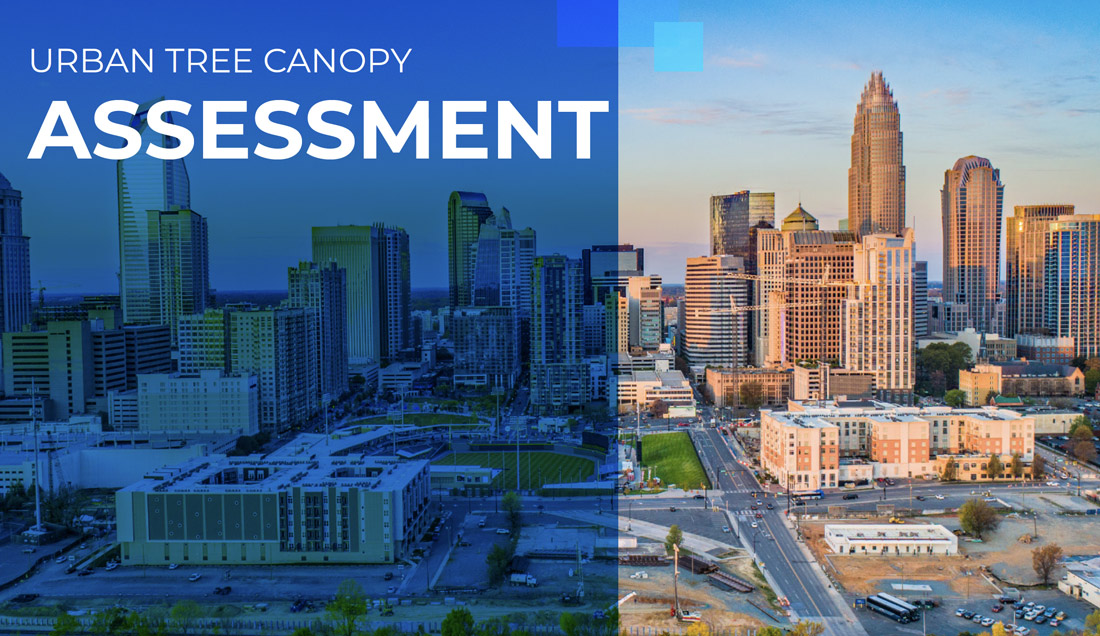Urban Tree Canopy Assessment Results
Fall 2023 Leaflet: The Only Constant is Change
10.13.23Winter 2024 Leaflet: What Trees Teach Us
2.09.24
TREE CANOPY ASSESSMENT REVEALS CHARLOTTE’S TREE COVERAGE ON A DOWNWARD TREND BUT 50% CANOPY GOAL REMAINS POSSIBLE
CHARLOTTE, N.C. (Nov. 14, 2023) – TreesCharlotte, in partnership with the City of Charlotte, has released the latest Tree Canopy Assessment, providing a comprehensive study of Charlotte’s past, present and future urban forest.
The study indicates that Charlotte maintains an impressive tree canopy, with coverage standing at 47.3%, reflecting a 0.5% loss since 2018. While this demonstrates the effectiveness of current tree-saving efforts, the study also reveals that Charlotte is not on track to achieve its 50% canopy coverage goal by 2050. Without implementing strategies to conserve and increase the tree canopy, there is concern that it could decline to 40% by 2050.
“The assessment data raises concerns about the future well-being of Charlotte’s tree canopy,” says Jane Myers, executive director at TreesCharlotte. “From reducing urban heat, enhancing road safety and increasing property values, trees offer a multitude of benefits. As a city, it’s crucial that we protect, nurture, and foster this valuable resource. We urge the community to come together and actively participate in tree care, native planting and education initiatives; it’s about the health and well-being of our city today, tomorrow and for years to come.”
TreesCharlotte and the City of Charlotte intend to use the findings of the assessment as a strategic framework to guide forthcoming planning initiatives aimed at safeguarding and enhancing Charlotte’s cherished tree canopy.
Tim Porter, chief urban forester for the City of Charlotte, emphasizes the importance of collaborative efforts, stating, “Over the past several years, the City of Charlotte has made many positive steps toward protecting our tree canopy including the adoption of many strategic tree canopy policy objectives in the 2040 Comprehensive Plan, increasing tree preservation and planting requirements in Charlotte’s Unified Development Ordinance, and receiving $1.1 million to help maintain and restore the tree canopy. The study shows that while we still have a robust tree canopy, we still have work to do. Our urban forest is a shared resource that requires a joint effort for its preservation. We must come together as a community to ensure its sustainability and longevity.”
Employing new methodology and advanced artificial intelligence, the research examined the distribution of tree canopy throughout the city using data obtained from the USDA’s National Agriculture Imagery Program (NAIP) in June 2022.
Maintaining a lively and robust tree canopy holds equal significance for both individual residents and the city at large. The time to act is now.
DOWNLOAD ASSESSMENT AND FACT SHEET HERE.
